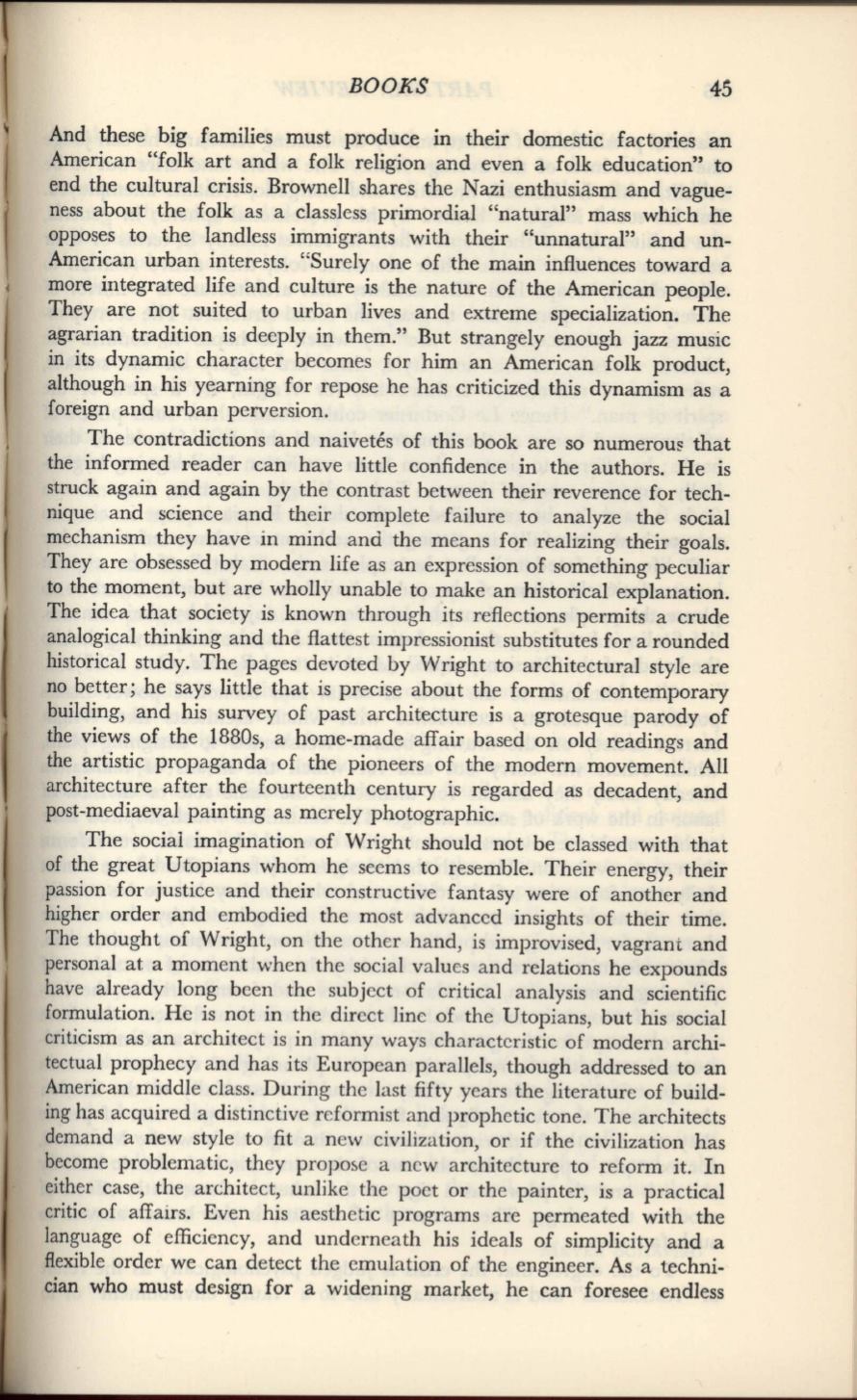
BOOKS
45
And these big families must produce in their domestic factories an
American "folk art and a folk religion and even a folk education" to
end the cultural crisis. Brownell shares the Nazi enthusiasm and vague-
ness about the folk as a classless primordial "natural" mass which he
opposes to the landless immigrants with their "unnatural" and un-
American urban interests. "Surely one of the main influences toward a
more integrated life and culture is the nature of the American people.
They are not suited to urban lives and extreme specialization. The
agrarian tradition is deeply in them." But strangely enough jazz music
in its dynamic character becomes for him an American folk product,
although in his yearning for repose he has criticized this dynamism as a
foreign and urban perversion.
The contradictions and naivetes of this book are so numerou~ that
the informed reader can have little confidence in the authors. He is
struck again and again by the contrast between their reverence for tech-
nique and science and their complete failure to analyze the social
mechanism they have in mind and the means for realizing their goals.
They are obsessed by modern life as an expression of something peculiar
to the moment, but are wholly unable to make an historical explanation.
The idea that society is known through its reflections permits a crude
analogical thinking and the flattest impressionist substitutes for a rounded
historical study. The pages devoted by Wright to architectural style are
no better; he says little that is precise about the forms of contemporary
building, and his survey of past architecture is a grotesque parody of
the views of the 1880s, a home-made affair based on old readings and
the artistic propaganda of the pioneers of the modern movement. All
architecture after the fourteenth century is regarded as decadent, and
post-mediaeval painting as merely photographic.
The social imagination of Wright should not be classed with that
of the great Utopians whom he seems to resemble. Their energy, their
passion for justice and their constructive fantasy were of another and
higher order and embodied the most advanced insights of their time.
The thought of Wright, on the other hand, is improvised, vagrant and
personal at a moment when the social values and relations he expounds
have already long been the subject of critical analysis and scientific
formulation. He is not in the direct line of the Utopians, but his social
criticism as an architect is in many ways characteristic of modern archi-
tectual prophecy and has its European parallels, though addressed to an
American middle class. During the last fifty years the literature of build-
ing has acquired a distinctive reformist and prophetic tone. The architects
demand a new style to fit a new civilization, or if the civilization has
become problematic, they propose a new architecture to reform it. In
either case, the architect, unlike the poet or the painter, is a practical
critic of affairs. Even his aesthetic programs are permeated with the
language of efficiency, and underneath his ideals of simplicity and a
flexible order we can detect the emulation of the engineer. As a techni-
cian who must design for a widening market, he can foresee endless


